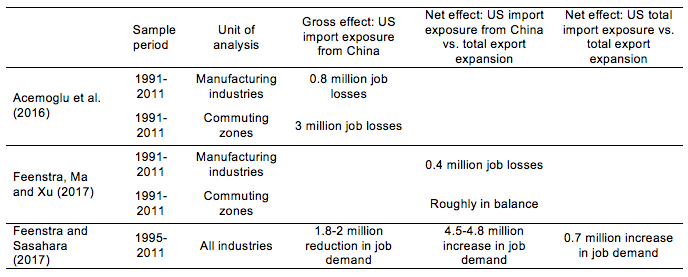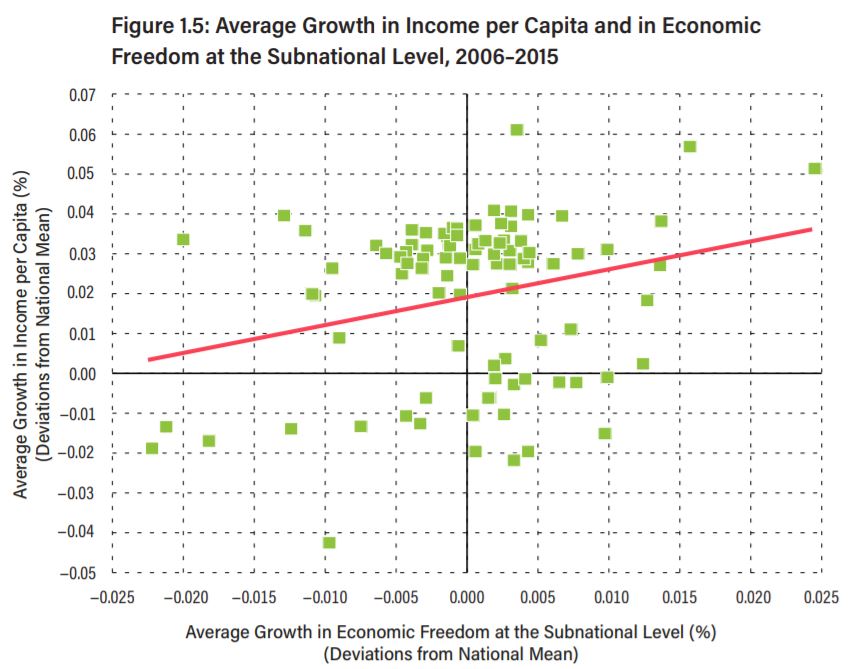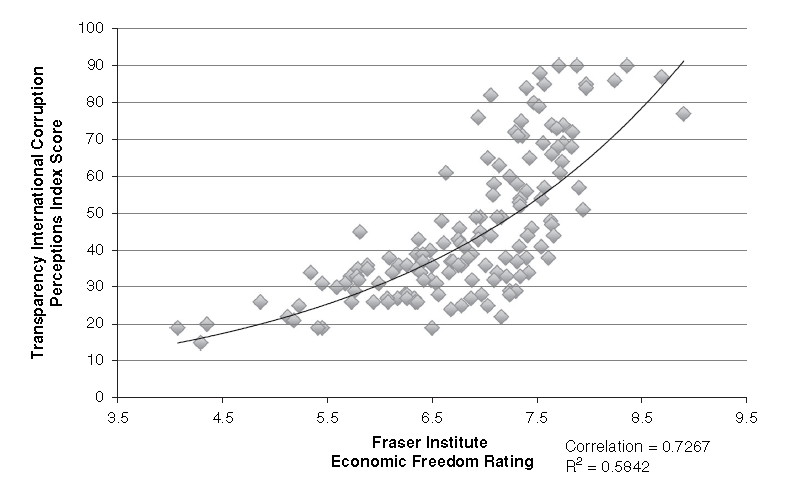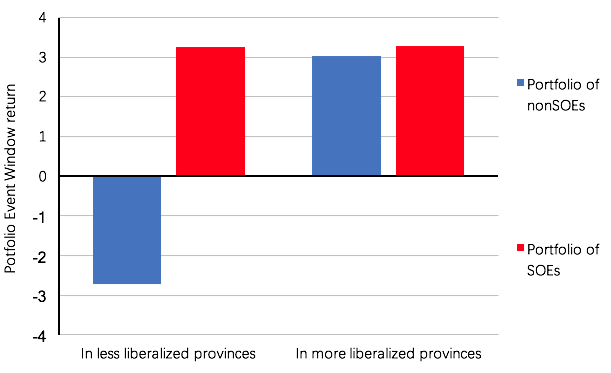“Profit and profitability are…crucial–for society even more than for the individual business,” wrote the late Peter Drucker.
Yet profitability is not the purpose of, but a limiting factor on business enterprise and business activity. Profit is not the explanation, cause, or rationale of business behavior and business decisions, but rather the test of their validity. If archangels instead of businessmen sat in directors’ chairs, they would still have to be concerned with profitability, despite their total lack of personal interest in making profits. The root of the confusion is the mistaken belief that the motive of a person–the so-called profit motive of businessmen–is an explanation of his behavior or his guide to right action. Whether there is such a thing as a profit motive at all is highly doubtful…In fact, the concept is worse than irrelevant: it does harm. It is a major cause of the misunderstanding of the nature of profit in our society and of the deep-seated hostility to profit, which are among the most dangerous diseases of an industrial society…And it is in large part responsible for the prevailing belief that there is an inherent contradiction between profit and a company’s ability to make a social contribution. Actually, a company can make a social contribution only if it is highly profitable.[ref]The Essential Drucker, pgs. 18-20.[/ref]
Drucker goes a little too far (his dismissal of economic explanations is a bit, well, wrong), but I was nonetheless reminded of this with the passing of science fiction authior Ursula Le Guin. In her speech at the 2014 National Book Awards, she said, “Books aren’t just commodities; the profit motive is often in conflict with the aims of art.” This is because “we live in capitalism” and “its power seems inescapable.” I suppose that could be true of profit to an extent, but the best evidence we have suggests the opposite. Economist Federico Etro’s work has shown that profitability helped drive artistic innovation over the centuries. For example, in Renaissance Italy, Etro found
a slow decline in real prices up to the 1420s, when the real price of paintings starts a rapid increase that continued for all the rest of the century. This process is more spectacular for the expected profitability of painting (the index based on the baseline regression), which suggests that the artistic profession was becoming more profitable. The expected compensations of a young apprentice (unaware of his future talent) were increasing during the XV century. But a similar increase in profitability applies also conditioning on the talent of the painter: the index of the expected compensation of a given painter (the one based on the full regression with artists’ fixed effects) reaches levels in the 1480s that are about three times as those of the 1420s. This suggests that the quality of the active painters was increasing over time, but even the most talented artists during the mid 1400s could expect an increase in their compensations along their career. Finally, notice that in the first half of the XVI century the real price of paintings finally stabilized at a relatively high level, which, as I argued, was not differentiated between regions.
This evolution suggests a Schumpeterian pattern. Part of the artistic creativity associated with Renaissance, and the artistic innovations of this period, such as the introduction of exact perspective (since the 1420s), oil colors (around the 1470s), the sfumato (with Leonardo), the colorito (with Titian) and an impressive differentiation of styles, may be due to increasing profitability of the profession made possible by the increasing demand for artistic goods. My data do not allow me to test directly for causality, but show for the first time that the expected profitability of the artistic profession was increasing rapidly during the XV century compared to the profitability of other professions (since we adjust prices for the purchasing power in terms of unskilled work). We should not underestimate the opinion of a privileged contemporary, Vasari, who repeatedly cited competition as a main driver of the achievements of the Florentine painters[.]
…An economic perspective suggests that it was the unprecedented increase in relative demand for artistic goods by wealthy patrons ready to compete for (and able to judge) quality in an interregional market that attracted large enough groups of painters in towns such as Florence, Venice and Rome. Competition incentivized these painters to differentiate styles and compete in quality, where higher quality was interpreted as the ability to solve a series of new technical problems in the realistic reproduction of the world in painted images. Under these rules of the game, positive externalities from the close interaction of painters in these towns strengthened their innovative ability (pgs. 25-28).
This was also true in Baroque era Italy:
We have studied the Italian market for oil paintings of historical subject during the Baroque era through econometric analysis of a unique data set containing the prices derived from the original contracts. Our main purpose was to show that looking at the market for paintings as a fully fledged market could shed light on the determination of the prices of some of the most valuable handmade objects of humankind. The market for oil paintings was extremely competitive and populated by players very similar to what we may now define as representatives of the homo economicus.
…In a celebrated historical account of the demand for art in the Renaissance period, Richard A. Goldthwaite has pointed out that Italian cities have generated the first modern markets for durable luxury goods, which have been at the origins of modern capitalism based on consumerism. “Today the consumer instinct is taken for granted: the challenge to producers is to introduce new products, reduce prices, and change fashion… If, on the one hand, we decry what this consumerism has developed into in our own times, with its commodity culture of planned obsolescence, throwaway goods, and fashion-ridden boutiques, on the other hand, we have enshrined its very spirit in our great museums. These veritable temples to the consumption habits of the past, where we worship as art one of the dynamics that gives life to the economic system of the West, mark the supreme achievement of capitalism.” The market for paintings in the sixteenth-seventeenth century is not only one of the first markets for durable luxury goods of the modern capitalistic society. Its surviving documentary evidence and even its surviving products are witnesses that it was also one of the first markets to follow the main laws of economics and rational market behavior (pg. 437).
Etro has found similar patterns in the Venetian Republic between 1550 and 1750, Amsterdam during the Golden Age, and the Spanish Golden Age. Profitability and market forces don’t necessarily inhibit art. Most of the time, they allow art to flourish.











 Stephen Prothero, Religious Literacy: What Every American Needs to Know–And Doesn’t (HarperCollins, 2007): “The United States is one of the most religious places on earth, but it is also a nation of shocking religious illiteracy.
Stephen Prothero, Religious Literacy: What Every American Needs to Know–And Doesn’t (HarperCollins, 2007): “The United States is one of the most religious places on earth, but it is also a nation of shocking religious illiteracy. Steven Reiss, The 16 Strivings for God: The New Psychology of Religious Experience (Mercer University Press, 2015): “This ground-breaking work will change the way we understand religion. Period. Previous scholars such as Freud, James, Durkheim, and Maslow did not successfully identify the essence of religion as fear of death, mysticism, sacredness, communal bonding, magic, or peak experiences because religion has no single essence. Religion is about the values motivated by the sixteen basic desires of human nature. It has mass appeal because it accommodates the values of people with opposite personality traits. This is the first comprehensive theory of the psychology of religion that can be scientifically verified. Reiss proposes a peer-reviewed, original theory of mysticism, asceticism, spiritual personality, and hundreds of religious beliefs and practices. Written for serious readers and anyone interested in psychology and religion (especially their own), this eminently readable book will revolutionize the psychology of religious experience by exploring the motivations and characteristics of the individual in their religious life” (
Steven Reiss, The 16 Strivings for God: The New Psychology of Religious Experience (Mercer University Press, 2015): “This ground-breaking work will change the way we understand religion. Period. Previous scholars such as Freud, James, Durkheim, and Maslow did not successfully identify the essence of religion as fear of death, mysticism, sacredness, communal bonding, magic, or peak experiences because religion has no single essence. Religion is about the values motivated by the sixteen basic desires of human nature. It has mass appeal because it accommodates the values of people with opposite personality traits. This is the first comprehensive theory of the psychology of religion that can be scientifically verified. Reiss proposes a peer-reviewed, original theory of mysticism, asceticism, spiritual personality, and hundreds of religious beliefs and practices. Written for serious readers and anyone interested in psychology and religion (especially their own), this eminently readable book will revolutionize the psychology of religious experience by exploring the motivations and characteristics of the individual in their religious life” ( Alfred R. Mele, Free: Why Science Hasn’t Disproved Free Will (Oxford University Press, 2014): “Does free will exist? The question has fueled heated debates spanning from philosophy to psychology and religion. The answer has major implications, and the stakes are high. To put it in the simple terms that have come to dominate these debates, if we are free to make our own decisions, we are accountable for what we do, and if we aren’t free, we’re off the hook. There are neuroscientists who claim that our decisions are made unconsciously and are therefore outside of our control and social psychologists who argue that myriad imperceptible factors influence even our minor decisions to the extent that there is no room for free will. According to philosopher Alfred R. Mele, what they point to as hard and fast evidence that free will cannot exist actually leaves much room for doubt. If we look more closely at the major experiments that free will deniers cite, we can see large gaps where the light of possibility shines through. In Free: Why Science Hasn’t Disproved Free Will, Mele lays out his opponents’ experiments simply and clearly, and proceeds to debunk their supposed findings, one by one, explaining how the experiments don’t provide the solid evidence for which they have been touted. There is powerful evidence that conscious decisions play an important role in our lives, and knowledge about situational influences can allow people to respond to those influences rationally rather than with blind obedience. Mele also explores the meaning and ramifications of free will. What, exactly, does it mean to have free will — is it a state of our soul, or an undefinable openness to alternative decisions? Is it something natural and practical that is closely tied to moral responsibility? Since evidence suggests that denying the existence of free will actually encourages bad behavior, we have a duty to give it a fair chance” (
Alfred R. Mele, Free: Why Science Hasn’t Disproved Free Will (Oxford University Press, 2014): “Does free will exist? The question has fueled heated debates spanning from philosophy to psychology and religion. The answer has major implications, and the stakes are high. To put it in the simple terms that have come to dominate these debates, if we are free to make our own decisions, we are accountable for what we do, and if we aren’t free, we’re off the hook. There are neuroscientists who claim that our decisions are made unconsciously and are therefore outside of our control and social psychologists who argue that myriad imperceptible factors influence even our minor decisions to the extent that there is no room for free will. According to philosopher Alfred R. Mele, what they point to as hard and fast evidence that free will cannot exist actually leaves much room for doubt. If we look more closely at the major experiments that free will deniers cite, we can see large gaps where the light of possibility shines through. In Free: Why Science Hasn’t Disproved Free Will, Mele lays out his opponents’ experiments simply and clearly, and proceeds to debunk their supposed findings, one by one, explaining how the experiments don’t provide the solid evidence for which they have been touted. There is powerful evidence that conscious decisions play an important role in our lives, and knowledge about situational influences can allow people to respond to those influences rationally rather than with blind obedience. Mele also explores the meaning and ramifications of free will. What, exactly, does it mean to have free will — is it a state of our soul, or an undefinable openness to alternative decisions? Is it something natural and practical that is closely tied to moral responsibility? Since evidence suggests that denying the existence of free will actually encourages bad behavior, we have a duty to give it a fair chance” ( Brink Lindsey, Human Capitalism: How Economic Growth Has Made Us Smarter–and More Unequal (Princeton University Press, 2013): “What explains the growing class divide between the well educated and everybody else? Noted author Brink Lindsey, a senior scholar at the Kauffman Foundation, argues that it’s because economic expansion is creating an increasingly complex world in which only a minority with the right knowledge and skills–the right “human capital”–reap the majority of the economic rewards. The complexity of today’s economy is not only making these lucky elites richer–it is also making them smarter. As the economy makes ever-greater demands on their minds, the successful are making ever-greater investments in education and other ways of increasing their human capital, expanding their cognitive skills and leading them to still higher levels of success. But unfortunately, even as the rich are securely riding this virtuous cycle, the poor are trapped in a vicious one, as a lack of human capital leads to family breakdown, unemployment, dysfunction, and further erosion of knowledge and skills. In this brief, clear, and forthright eBook original, Lindsey shows how economic growth is creating unprecedented levels of human capital–and suggests how the huge benefits of this development can be spread beyond those who are already enjoying its rewards” (
Brink Lindsey, Human Capitalism: How Economic Growth Has Made Us Smarter–and More Unequal (Princeton University Press, 2013): “What explains the growing class divide between the well educated and everybody else? Noted author Brink Lindsey, a senior scholar at the Kauffman Foundation, argues that it’s because economic expansion is creating an increasingly complex world in which only a minority with the right knowledge and skills–the right “human capital”–reap the majority of the economic rewards. The complexity of today’s economy is not only making these lucky elites richer–it is also making them smarter. As the economy makes ever-greater demands on their minds, the successful are making ever-greater investments in education and other ways of increasing their human capital, expanding their cognitive skills and leading them to still higher levels of success. But unfortunately, even as the rich are securely riding this virtuous cycle, the poor are trapped in a vicious one, as a lack of human capital leads to family breakdown, unemployment, dysfunction, and further erosion of knowledge and skills. In this brief, clear, and forthright eBook original, Lindsey shows how economic growth is creating unprecedented levels of human capital–and suggests how the huge benefits of this development can be spread beyond those who are already enjoying its rewards” ( Gretchen Rubin, Better Than Before: What I Learned About Making and Breaking Habits–to Sleep More, Quit Sugar, Procrastinate Less, and Generally Build a Happier Life (Broadway Books, 2015): “How do we change? Gretchen Rubin’s answer: through habits. Habits are the invisible architecture of everyday life. It takes work to make a habit, but once that habit is set, we can harness the energy of habits to build happier, stronger, more productive lives. So if habits are a key to change, then what we really need to know is: How do we change our habits? Better than Before answers that question. It presents a practical, concrete framework to allow readers to understand their habits—and to change them for good. Infused with Rubin’s compelling voice, rigorous research, and easy humor, and packed with vivid stories of lives transformed, Better than Before explains the (sometimes counter-intuitive) core principles of habit formation. Along the way, Rubin uses herself as guinea pig, tests her theories on family and friends, and answers readers’ most pressing questions—oddly, questions that other writers and researchers tend to ignore:
Gretchen Rubin, Better Than Before: What I Learned About Making and Breaking Habits–to Sleep More, Quit Sugar, Procrastinate Less, and Generally Build a Happier Life (Broadway Books, 2015): “How do we change? Gretchen Rubin’s answer: through habits. Habits are the invisible architecture of everyday life. It takes work to make a habit, but once that habit is set, we can harness the energy of habits to build happier, stronger, more productive lives. So if habits are a key to change, then what we really need to know is: How do we change our habits? Better than Before answers that question. It presents a practical, concrete framework to allow readers to understand their habits—and to change them for good. Infused with Rubin’s compelling voice, rigorous research, and easy humor, and packed with vivid stories of lives transformed, Better than Before explains the (sometimes counter-intuitive) core principles of habit formation. Along the way, Rubin uses herself as guinea pig, tests her theories on family and friends, and answers readers’ most pressing questions—oddly, questions that other writers and researchers tend to ignore: Drew Magary, The Hike: A Novel (Penguin, 2016): “When Ben, a suburban family man, takes a business trip to rural Pennsylvania, he decides to spend the afternoon before his dinner meeting on a short hike. Once he sets out into the woods behind his hotel, he quickly comes to realize that the path he has chosen cannot be given up easily. With no choice but to move forward, Ben finds himself falling deeper and deeper into a world of man-eating giants, bizarre demons, and colossal insects. On a quest of epic, life-or-death proportions, Ben finds help comes in some of the most unexpected forms, including a profane crustacean and a variety of magical objects, tools, and potions. Desperate to return to his family, Ben is determined to track down the “Producer,” the creator of the world in which he is being held hostage and the only one who can free him from the path. At once bitingly funny and emotionally absorbing, Magary’s novel is a remarkably unique addition to the contemporary fantasy genre, one that draws as easily from the world of classic folk tales as it does from video games. In The Hike, Magary takes readers on a daring odyssey away from our day-to-day grind and transports them into an enthralling world propelled by heart, imagination, and survival” (
Drew Magary, The Hike: A Novel (Penguin, 2016): “When Ben, a suburban family man, takes a business trip to rural Pennsylvania, he decides to spend the afternoon before his dinner meeting on a short hike. Once he sets out into the woods behind his hotel, he quickly comes to realize that the path he has chosen cannot be given up easily. With no choice but to move forward, Ben finds himself falling deeper and deeper into a world of man-eating giants, bizarre demons, and colossal insects. On a quest of epic, life-or-death proportions, Ben finds help comes in some of the most unexpected forms, including a profane crustacean and a variety of magical objects, tools, and potions. Desperate to return to his family, Ben is determined to track down the “Producer,” the creator of the world in which he is being held hostage and the only one who can free him from the path. At once bitingly funny and emotionally absorbing, Magary’s novel is a remarkably unique addition to the contemporary fantasy genre, one that draws as easily from the world of classic folk tales as it does from video games. In The Hike, Magary takes readers on a daring odyssey away from our day-to-day grind and transports them into an enthralling world propelled by heart, imagination, and survival” (
